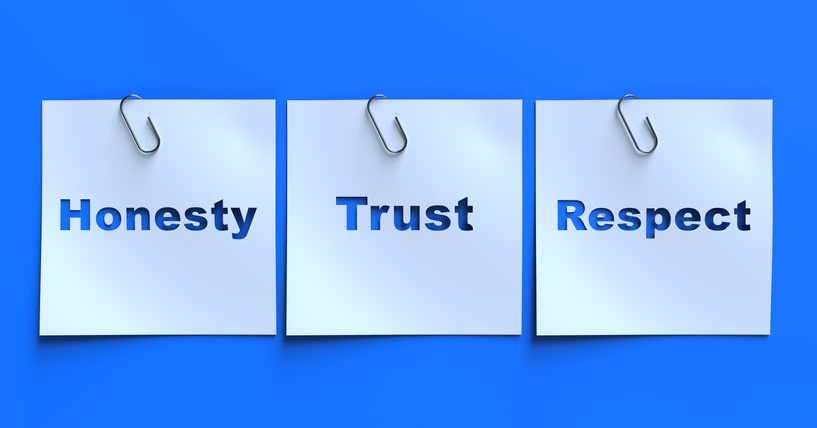There are many reasons why we may not always be 100% authentic or transparent in our communication. Whether you’re protecting yourself or others from negative feelings, uncertainty, or the fear of the unknown, ultimately, you’re hiding the facts, even if you don’t realize it.
If you’re someone who starts with “If I’m being honest.”
You’ve just put in question everything else you’ve previously said. It’s not that you intended it that way, but it’s like you’re admitting out loud, “Enough is enough. I’m finally ready to tell you the truth about what I think and feel” about fill-in-the-blank.
Take accountability to foster trust and respect.
Doing what you say you’re going to do and owning your words and actions demonstrates your commitment to others. When you let down your guard and express what’s on your mind, you create a safe space for courageous communication and welcome others to share their thoughts and perspectives.
Connect with kindness.
If what you’re going to say may be difficult for someone to hear, don’t rush or be abrupt. Instead, be sincere and tell them what you have to share isn’t easy. Then proceed gently but firmly, leaving no room for misinterpretation. Pause often and answer questions thoroughly, confirming that your message is clear and understood.
When you need to “Communicate ‘No’ Kindly,” offer suggestions and let them know you can revisit the topic if needed. However, watch out for the tendency to people-please or hide your feelings just to appease the other. Wavering or giving in to another’s request causes confusion and doubt in your conviction, especially if you do not agree or want to proceed. And although it may make you a ‘martyr’ at the moment, you may start to notice frustration and resentment forming after a while.
Here are a few items to keep top of mind to help you be objective and open in your communication:
- Be clear and direct. Consider your tone, body language, energy, and mannerisms when sharing what’s on your mind or making a request. Speak slowly and in a way that encourages dialogue rather than doing all the talking and prompting another person’s defenses to take hold. Share the facts, and don’t sugarcoat the crucial points. Indicate that this is your perspective and is what feels right or true to you.
- Admit how you feel. Allow yourself to be vulnerable and welcome others to express themselves too. Get curious about your feelings and take the time to think through, vent, and process any anger before interacting with another. You can also put your thoughts on paper to decipher the root cause issue behind what’s bothering you. Type or write feverishly without thinking, then process and hit delete or shred.
- Consider alternative perspectives. There is always another side to any story or situation. Look at the problem from multiple angles and perspectives to see if what you believe really needs to be the only way. Invite others to share their views and listen intently without interruption.
Bolster your communication approach through awareness and understanding.
To get your message across effectively and make an impact, boost your relevancy to present and express yourself in a meaningful way. You can use various assessments to learn more about your communication preferences and style.
If you’re looking for a partner to guide you, my approach is personalized and customized to meet you where you’re at in your journey. I’d be delighted to speak with you. You can schedule a free call with me using this link.

